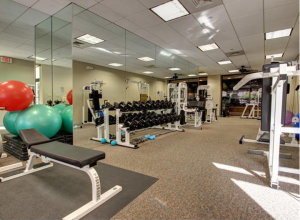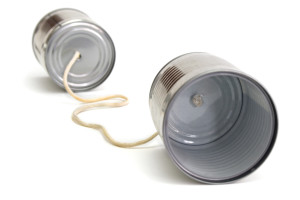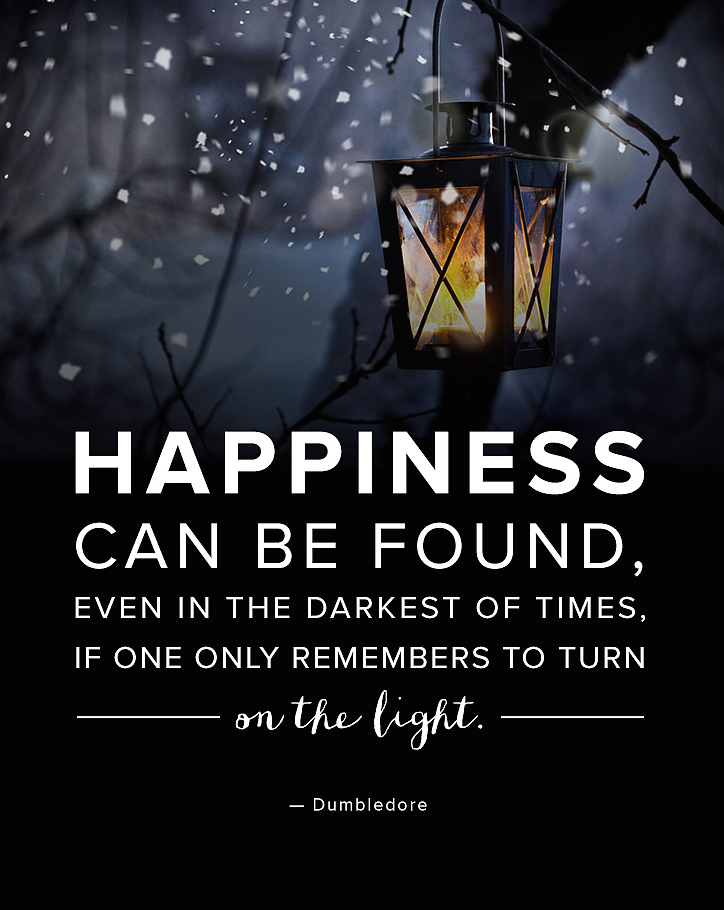by Jena | Feb 18, 2016 | Advance Care Planning, Stem Cell Transplant |
This morning Dad had his third bone marrow biopsy and received two bags of platelets in anticipation of the procedure to place his central line catheter tomorrow, Friday, February 19th.
At 1:00 p.m., we met with two different nurses, not Denise, and Dr. Ayala. First, we learned that the 19 year old donor passed the physical examination. Excellent.
 Next, Dr. Ayala examined Dad and confirmed that Dad is ready for the transplant and that his disease
Next, Dr. Ayala examined Dad and confirmed that Dad is ready for the transplant and that his disease
is minimized as much as possible. Dr. Ayala reminded us that every transplant is different and that there will be bumps along the way. He stressed the importance for Dad to stay very active physically and mentally. Dad bragged to the doctor that he was in the gym earlier in the week for 45 minutes with 20 minutes on the stationary bike.
Dr. Ayala reviewed the risks of the transplant again. CTCL patients are at a high risk of skin infection since CTCL is a skin related cancer. He also discussed graft versus host (GvH), and he reminded us that Dad’s chance of death is 25-30%, which is higher than the traditional CTCL patient due to Dad’s age. At 75.9 years old, Dad will be the oldest patient to ever receive a stem cell transplant at the Moffitt Cancer Center. Wow! Doctors seem to believe that Dad’s body is closer to that of a healthy 55 year old. The medical staff continue to be amazed with Dad’s positive demeanor and “can do” attitude. They also recognize the outstanding support Mom provides non-stop daily. I know that these are key drivers in Dad being a candidate for a stem cell transplant. Dad is raising the “age” bar.
As we discussed the risk of death, Dr. Ayala said he would be honest and forthright about Dad’s condition. Dr. Ayala shared his view about not using life support. Dad reviewed his advance directive, now using Five Wishes, with Dr. Ayala. Dad made it clear as to when he would want to be resuscitated and when he would not. I inquired about ensuring that Dr. Ayala would indicate the best time to transition to hospice.
Days are named and tracked based upon the actual day Dad is to be infused with the donor’s stem cells. The days leading up to that day are noted as “negative” while the days after are noted as “positive.”
The plan for Sunday, February 21 (aka DAY -5), is for Dad to call at 10:00 a.m. to see if a bed is available. If so, we go to Moffitt and check Dad in as an inpatient. If no bed is available yet, Dad will go to the Blood and Marrow Transplant clinic, also at the Moffitt Cancer Center, for blood work and prep for his first of four days of chemotherapy, fludarabine, to begin Sunday evening. The assumption is that a bed will eventually be available that same day.
Last, we spent a fair amount of time with two pharmacists, Bryan, a pharmacist resident, and Amy. All of Dad’s current and future medications were reviewed in great detail. We discussed the two chemotherapy drugs, fludarabine and melphalan, to be given during the first four days of Dad being an inpatient. Melphalan is a drug, which may cause Dad mucositis. Last year, Dad experienced severe mucositis of the mouth as a terribly painful side effect of FOLOTYN, another chemotherapy drug. He was living on milkshakes and Boost for one to two weeks.
The pharmacists said that Dad will be infused with the donor’s stem cells as soon as they arrive…even in the middle of the night, which is the famous DAY 0.
We also discussed what will be done to prevent GvH. The donor’s cells could attack Dad’s skin, GI tract and liver. The first method of prevention is through intravenous cyclophosphamide on DAY +4 & DAY +5. This drug can delay the time for the cells to engraft. Cyclophosphamide does not harm the donor’s stem cells. It spares the good T-cells (regulatory T-cells) and knocks out the harmful T-cells. The second method of GvH prevention is sirolimus, starting on DAY +5.
Also starting on DAY +5 is a daily neupogen shot to accelerate the recovery of the new stem cells. The daily shots of neupogen will be given until Dad achieves a neutrophil count of 1,500/mm3 of blood.
by Jena | Feb 18, 2016 | Stem Cell Transplant |
 Yesterday, Dad’s second donor, the 19 year old from Germany, was to have his physical evaluation to confirm that he is able to serve as a donor for the stem cell transplant. As of 9:45 p.m. last night, Dad still hadn’t heard. We are a bit frustrated since there has been no communication from Denise, the transplant coordinator, about the donor’s physical evaluation results and a “surprise” appointment for a bone marrow biopsy scheduled for today. Dad attempted to reach Denise via phone and email yesterday with no success.
Yesterday, Dad’s second donor, the 19 year old from Germany, was to have his physical evaluation to confirm that he is able to serve as a donor for the stem cell transplant. As of 9:45 p.m. last night, Dad still hadn’t heard. We are a bit frustrated since there has been no communication from Denise, the transplant coordinator, about the donor’s physical evaluation results and a “surprise” appointment for a bone marrow biopsy scheduled for today. Dad attempted to reach Denise via phone and email yesterday with no success.
Dad was scheduled to be at the main campus of the Moffitt Cancer Center at 7:15 a.m. for his bone marrow biopsy. I suggested to Dad that he refuse the procedure until he received confirmation directly from Denise. Dad has been under going some repeat pre-transplant testing since some of the prior tests had expired after 30 days, such as the CT scan of his sinuses and chest. There had not been a discussion about a repeat bone marrow biopsy. We don’t want Dad to repeat tests unnecessarily.
We should learn more later today as Dad is scheduled to meet with Dr. Ayala, transplant doctor, at 1:00 p.m. today.
by Jena | Feb 6, 2016 | Uncategorized |
Dad will continue to receive regular blood support at the Moffitt Cancer Center at International Plaza (MIP) until it is time for him to be admitted for his stem cell transplant on February 21st. Dad’s latest blood counts indicated the need for a blood transfusion since his hemoglobin was 6.7, which is below the desired 7.0. His white blood cell count was 1.46, and his platelet count was 12. Yesterday, Dad went to MIP to receive two bags of blood to boost his hemoglobin level. By the afternoon, Dad was energized by the transfusion. A nice way to start the weekend.
by Jena | Feb 4, 2016 | Brentuximab Vedotin, Radiation Therapy, Stem Cell Transplant |
Upon arrival to the Moffitt Cancer Center this morning, I went straight to Starbucks on the first floor. As I stood in line to order my standard venti-skinny-vanilla latte and Mom’s tall-hazelnut latte, Krista, hematology oncology PA, greeted me with a hug…a real hug… long, tight, and meaningful. Krista is always a bundle of energy and full of smiles. She immediately inquired about Dad. I actually think she was a bit puzzled to see me at the Starbucks. She probably had assumed that I would be at the inpatient section of Moffitt with Dad in the Blood & Marrow Transplant unit. Krista hadn’t heard that Dad’s transplant had been canceled. Once I brought Krista up to speed, she gave me positive words of encouragement and wanted me to tell Mom and Dad “hello” and that she is thinking of them. Krista said that if anyone deserves the transplant…it is Dad. She also said she and Dr. Sokol miss Dad’s regular emails. I got a good laugh. Dad had smartly figured out the best way to communicate with Dr. Sokol and Krista was through email. With an iPhone constantly in Dad’s hands, Dad was often an emailing machine, communicating daily with Dr. Sokol and Krista. I teased Krista saying they were probably glad to get a break from Dad’s barrage of daily emails.
Upstairs, we first met with Denise, transplant coordinator. She wanted to review what had transpired since we met with her and Dr. Ayala last month. Dad described the radiation and brentuximab vedotin treatments. He recounted the blood and platelet transfusions he received along with the neupogen shots. Dr. Ayala came in and gave Dad a thorough physical examination of his tumors and skin. The tumors on Dad’s head are nicely reduced but black and scabby. Dr. Ayala noted that Dad had “active” borders on a couple of the tumors on his head. The subcutaneous golf-ball sized tumor, near the crook of Dad’s left arm, is now gone. Overall, Dr. Ayala was pleased with the results of the radiation and brentuximab vedotion treatments. He could not discern which of the treatments or both were having the positive impact. Dr. Ayala confirmed that Dad has reached his best opportunity for a stem cell transplant. Thus, Dad is moving forward with the younger donor…19 years old, living in Germany.
The updated schedule of events:
 February 11th: Repeat of some pre-transplant testing, which expired after 30 days. (CT scans of his sinuses and chest, labs, flow cytometry to check the Sézary count)
February 11th: Repeat of some pre-transplant testing, which expired after 30 days. (CT scans of his sinuses and chest, labs, flow cytometry to check the Sézary count)- February 15th: Receive third brentuximab vedotin infusion
- February 17th: Physical evaluation of the 19 year old donor
- February 18th: Follow-up visit with Dr. Ayala
- February 19th: Removal of PICC and placement of central line catheter
- February 20th: Flush the central line catheter
- February 21st: Admission for stem cell transplant
In an ironic way, I enjoy the doctor visits with Mom and Dad. One’s true character shows during difficult times. I am constantly amazed at the sustained strength both, Mom and Dad, exhibit. Their interactions with the medical staff are always upbeat and spirited. Lots of laughter, jokes, hugs, and gratitude are vividly on display during each visit. This is irregardless of who the medical staff are…from the most educated and experienced doctor to the new, fresh-out-of-school technician. If you were to walk by the exam room, you would not suspect that we are discussing cancer and the risk of death.
by Jena | Feb 3, 2016 | Stem Cell Transplant |
This is the week. Or so we thought. Plans were in place. Preparations were completed with anticipation that Dad would be admitted as an inpatient to Moffitt tomorrow. One of Dad’s key preparations was to get his 2015 taxes prepared and sent to his accountant. On Monday, while standing at the UPS counter to ship the tax paperwork to his accountant, Dad received a call from Denise, the transplant coordinator. Dad’s donor did not pass his physical evaluation. There would be no transplant at this time.
Rather than moving Dad into Moffitt tomorrow, we are meeting with Dr. Ayala, transplant doctor, to learn about next steps. I believe Denise is seeking the availability of Dad’s second “perfect match” donor. The second donor is a 19 year old male, who was unavailable the month of January and most of February.
 The timing of the radiation and systemic treatments Dad has just undergone in January was perfectly aligned for Dad to be admitted this week and receive the stem cells next week. Timing is crucial to increasing the chances of a positive outcome of the transplant. The goal is to have reduced the cancer in Dad’s blood and his skin, as much as possible, at the time the donor’s stem cells are transplanted to Dad.
The timing of the radiation and systemic treatments Dad has just undergone in January was perfectly aligned for Dad to be admitted this week and receive the stem cells next week. Timing is crucial to increasing the chances of a positive outcome of the transplant. The goal is to have reduced the cancer in Dad’s blood and his skin, as much as possible, at the time the donor’s stem cells are transplanted to Dad.
Dad is racing against the clock for a transplant. How quickly will Dad’s cancer come back? What treatments can Dad endure to sustain him until the second donor is available? How long must Dad wait? Is the second donor healthy enough to pass his physical evaluation, unlike the first donor? We shall see.
 Next, Dr. Ayala examined Dad and confirmed that Dad is ready for the transplant and that his disease
Next, Dr. Ayala examined Dad and confirmed that Dad is ready for the transplant and that his disease
 Yesterday, Dad’s second donor, the 19 year old from Germany, was to have his physical evaluation to confirm that he is able to serve as a donor for the stem cell transplant. As of 9:45 p.m. last night, Dad still hadn’t heard. We are a bit frustrated since there has been no communication from Denise, the transplant coordinator, about the donor’s physical evaluation results and a “surprise” appointment for a bone marrow biopsy scheduled for today. Dad attempted to reach Denise via phone and email yesterday with no success.
Yesterday, Dad’s second donor, the 19 year old from Germany, was to have his physical evaluation to confirm that he is able to serve as a donor for the stem cell transplant. As of 9:45 p.m. last night, Dad still hadn’t heard. We are a bit frustrated since there has been no communication from Denise, the transplant coordinator, about the donor’s physical evaluation results and a “surprise” appointment for a bone marrow biopsy scheduled for today. Dad attempted to reach Denise via phone and email yesterday with no success. February 11th: Repeat of some pre-transplant testing, which expired after 30 days. (CT scans of his sinuses and chest, labs,
February 11th: Repeat of some pre-transplant testing, which expired after 30 days. (CT scans of his sinuses and chest, labs,  The timing of the radiation and systemic treatments Dad has just undergone in January was perfectly aligned for Dad to be admitted this week and receive the stem cells next week. Timing is crucial to increasing the chances of a positive outcome of the transplant. The goal is to have reduced the cancer in Dad’s blood and his skin, as much as possible, at the time the donor’s stem cells are transplanted to Dad.
The timing of the radiation and systemic treatments Dad has just undergone in January was perfectly aligned for Dad to be admitted this week and receive the stem cells next week. Timing is crucial to increasing the chances of a positive outcome of the transplant. The goal is to have reduced the cancer in Dad’s blood and his skin, as much as possible, at the time the donor’s stem cells are transplanted to Dad.
Recent Comments